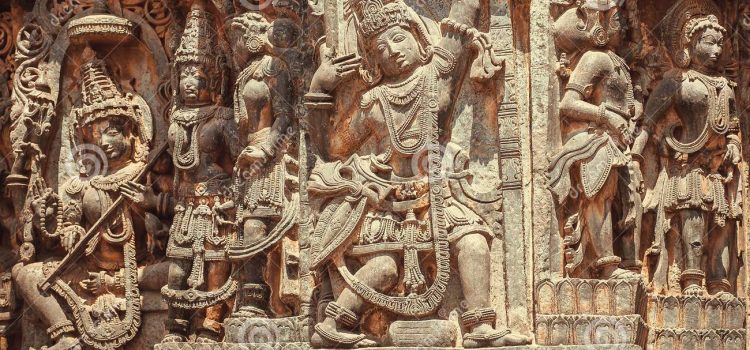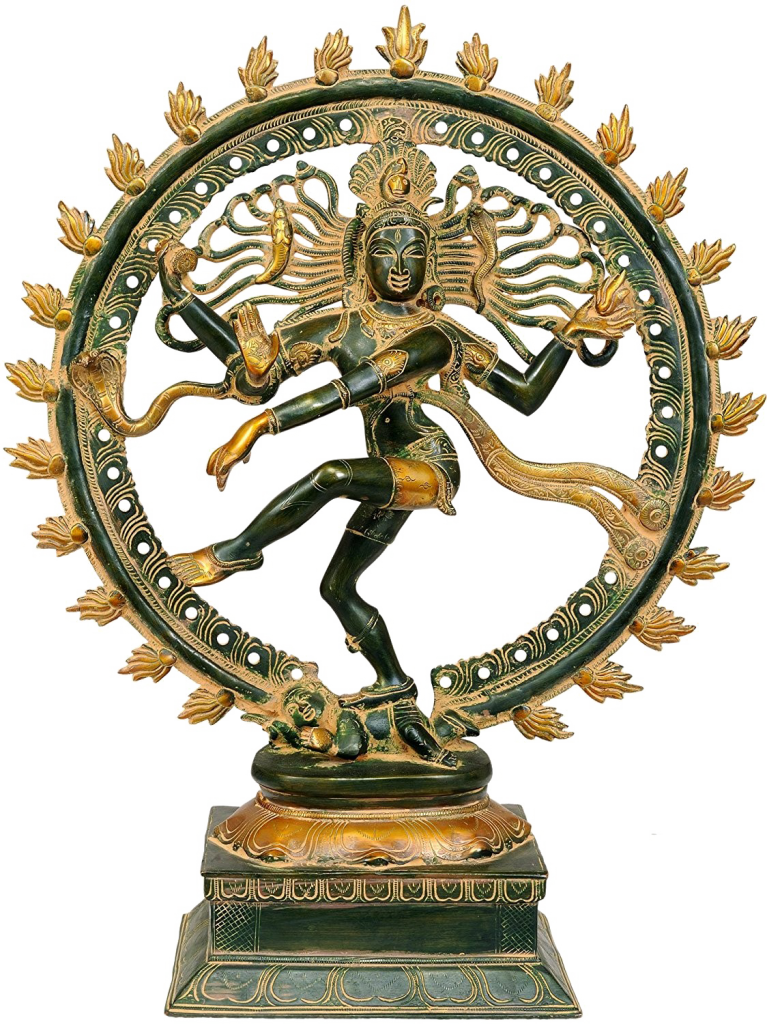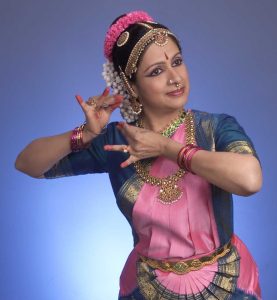
In many religious and spiritual traditions, dance is a form of worship of the Divine Universal Consciousness. For example, dervishes are associated with certain Sufi traditions, where continuous rhythmic twirling dance movements, are seen as physical meditations on the Divine Consciousness. Native American spirituality includes complex dance forms. Hinduism also has a very rich tradition of dance forms as actions of worship of the Divine Consciousness or God. Bharatanatyam is a classical dance form, which originated in the temples of Tamil Nadu, in the southern part of India. It is also referred to as a “temple dance”. Temple dancers, known as Devadasis, worshiped the Divine through their art of dancing. Some of the postures of Bharatanatyam dances can be seen in the beautiful sculptures of Indian temples.
Bharatanatyam dances are seen as forms of worship and reverence where the dancers attempt to awaken the divine consciousness of themselves and the audience. My experiences of watching Bharatanatyam dancers, in ornate costumes, jewelry, exaggerated makeup, performing their dance sequences with accompanying vocalists, musicians, like flutists, artists of percussion instruments, have been breathtaking and mesmerizing. The choreography of Bharatanatyam seamlessly integrates complex rhythmic patterns of movement in hands and feet, different postures, and facial expressions to embody the character and emotions of the dancer. The choreography of dances can be slow, and languid where dancers demonstrate gentle emotions. However, as the story progresses to the climax, the choreography escalates in rhythm and movement, which leads to a crescendo of explosive bursts of dance forms, where the dancers express intense emotions, such as, fear, rage, joy, victory, celebration, defeat or deep sorrow.
Bharatanatyam dances have stories which are based on Indian mythology and characters enact the stories with powerful emotions. The background lighting also enhances the emotion of the dancers. A salient narrative that dancers express is the love affair of the Divine and the human being. The interplay of Lord Krishna, one physical manifestation of the Divine Consciousness, and Radha, representing humanity, is one interpretation of Krishna’s “leelas” or stories of his life. One scenario of the Divine and human love affair includes dance forms where Radha sits in adoration and awe of her Lord Krishna, as He plays His flute with haunting melodies. Another scenario is Radha adorning herself with flowers in her hair and makeup, such as “kajol” in her eyes and “bindi” on her forehead, before she meets her Divine Lord. I have observed dance forms where the dark night of the soul is depicted as the soul feels lost, and confused without Divine guidance. The dancer portrays Radha, in deep distress as she tearfully expresses her fears of abandonment, and searches frantically for her Divine Lord in a dark and stormy night with thunder and lightening. Despite her female companions (sakhi) trying to sooth her, Radha appears inconsolable until she finds her Lord Krishna, where one sees the sublime joy between lovers, Divine and human. Radha realizes that Lord Krishna is never far away from her despite her fears of abandonment.
Although, I have watched Bharatanatyam dance forms, I do not know much about the ideology and discipline of this dance form. Therefore, it is a great pleasure and honor to interview Dr. Malini Krishnamurthi today. She has taught Bharatanatyam for 42 years in the United States. She studied this art form for several decades under the careful guidance of her Guru, Kalaimamani K. Kalyanasundaram of the Sri Raja Rajeswari Bharata Natya Kala Mandir, Mumbai, India and she is now a Guru to her students. She has transformed many young girls into passionate dancers. Dr. Krishnamurthi points out that dance forms involve the mind, body and spirit of the dancer and the dancer and audience can reach higher levels of consciousness. Dr. Krishnamurthi discusses the critical point that Hinduism is a monotheistic tradition and not a polytheistic tradition, as portrayed in some parts of the world. She beautifully articulates the ideology that God can be viewed as with or without form. Devotees may choose a form of God for worship, since an abstract God without form, can be difficult to conceptualize for some people. The Divine manifestation of the Cosmic Dancer is Natraj, Lord Shiva, designated as the Lord of Dance.

Natraj: King of Dance
(clipground.com) Free Image
This post consists of my interview with Dr. Krishnamurthi about Bharatanatyam. Please watch the video clip of the interview with Dr. Krishnamurthi. I am deeply grateful to Dr. Krishnamurthi for her kindness, diligence, brilliance and time commitment in editing the video clip ( link for video clip is below)
Interview with Dr. Malini Krishnamurthi on Bharatanatyam
This is the link for Natyanjali, school of dance, founded by Dr. Krishnamurthi. Her email contact: Leapingfeet@gmail.com
Dr. Krishnamurthi (Guru)


Dr. Krishnamurthi (Bharatanatyam dance posture)
CONCLUDING REMARKS
There has been an abundance of research about physical movement benefiting physical health. Due to the inherent connection between mind and body, new research suggests that movement is beneficial for mental health. Dr. Pillay (2016) wrote in the Harvard Health Publishing from Harvard Medical School that movements, including regular exercise or meditative movements like yoga, tai chi, qigong are beneficial for mental health. Dr. Pillay discussed a study by Joanne Lumsden and her colleagues (2014) that found that synchronizing movement with another person increased the person’s self-esteem. Synchronized movement facilitates strong interpersonal connection and cooperation. This points to the fulfilling and enriching relationship between the guru and the student of dance, a relationship that often lasts for a lifetime.